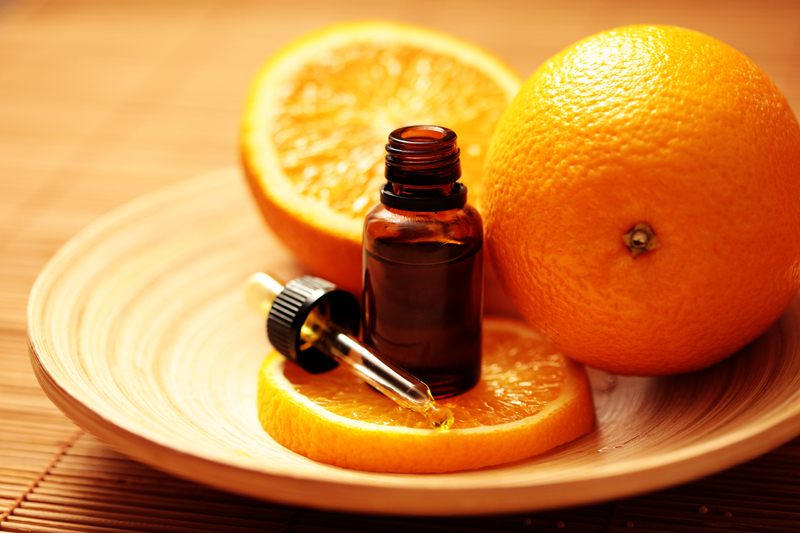Clean with Confidence: Your Guide to a Grease-Free Enamel Oven
Posted on 25/08/2025
Clean with Confidence: Your Guide to a Grease-Free Enamel Oven
Keeping your kitchen sparkling is a task that brings both satisfaction and peace of mind. However, when it comes to your enamel oven, lingering grease stains, burnt-on food and stubborn grime can make the task seem overwhelming. Fear not! With this comprehensive guide to grease-free enamel ovens, you'll learn proven strategies, practical cleaning routines, and essential tips to restore your oven's brilliance, so you can clean with confidence every single time.

Why Is It Important to Keep Your Enamel Oven Grease-Free?
Healthy living begins with a clean kitchen, and your oven's condition plays a pivotal role. Grease buildup not only affects the flavor of your meals but can also harbor bacteria, trigger smoke alarms, and even heighten fire risks.
- Improved Air Quality: Regular cleaning prevents foul odors and smoke caused by burnt grease.
- Prolonged Oven Life: Removing grease and food debris helps protect the enamel coating from permanent damage.
- Enhanced Cooking Performance: A clean oven distributes heat more efficiently, ensuring evenly cooked meals.
- Safety First: Grease is flammable and can contribute to dangerous kitchen fires; regular cleaning mitigates this risk.
With so much at stake, there's every reason to prioritize a grease-free oven routine. Next, let's discover *what makes enamel ovens unique* and the best methods for their maintenance.
What Makes Enamel Ovens Special?
Modern ovens often come with either stainless steel, self-cleaning lining, or enamel coatings. Understanding your oven's surface is the first step to effective, safe cleaning.
- Enamel Coating: A smooth, glass-like finish applied to metal surfaces for protection and aesthetics.
- Resistant to Staining: Quality enamel resists staining, making it ideal for frequent oven use.
- Vulnerable to Abrasives: Although durable, enamel can chip or dull if scrubbed with harsh tools.
Proper cleaning methods are essential to preserve your oven's enamel shine and structural integrity. The following tutorials will guide you through every step, so you can clean enamel ovens effectively and safely.
Essential Supplies for Cleaning Enamel Ovens
Before diving into the process, assemble these must-have cleaning tools:
- Soft microfiber or cotton cloths
- Non-abrasive sponges
- Gentle scrub brushes (nylon bristles)
- Baking soda
- Distilled white vinegar
- Mild dish soap
- Spray bottle
- Rubber gloves
- Plastic scraper or spatula
For tough stains, you may also need:
- Enamel-safe oven cleaner (ammonia- and bleach-free)
- Lemon juice
- Soft tooth brush (for crevices)
*Always choose gentle, chemical-free options wherever possible to extend the life of your oven's enamel.*
Step-By-Step: How to Clean Grease from Your Enamel Oven
1. Preparation: Safety First
Always switch off your oven and make sure it's completely cool before cleaning. Remove oven racks, thermometers, and any other accessories for separate washing.
- Lay down old towels or newspapers under the open oven door to catch drips and debris.
- Wear rubber gloves to protect your hands from both dirt and cleaning solutions.
2. Initial Wipe-Down
Using a damp, soft cloth or non-abrasive sponge, *wipe away loose crumbs and surface grease.* For heavier spots, allow a warm dampened cloth to sit on the area for several minutes before wiping.
3. Create a Gentle Cleaning Solution
DIY Natural Cleaner: Mix 3 tablespoons of baking soda with a few drops of mild dish soap and enough water to make a spreadable paste.
- Baking soda breaks down stubborn grease while acting as a gentle abrasive.
- Dish soap helps dissolve fats and oils without damaging enamel.
4. Apply and Let Sit
Use your non-abrasive sponge or cloth to spread the baking soda paste across grease-stained areas. *Focus especially on corners or places with burned-on residue.* Let the paste rest for 15-20 minutes to allow the cleaning agents to soften grime.
5. Scrub Gently
With a soft brush or sponge, gently scrub away loosened dirt.
Important: Do not use steel wool, metal brushes, or harsh scouring pads as they can scratch and dull the enamel surface.
6. Rinse and Neutralize
Dip a fresh microfiber cloth in clean, warm water and wipe away the baking soda mixture. For thoroughness and added shine, lightly spray the area with a 1:1 mixture of white vinegar and water, then wipe again.
- Vinegar helps remove lingering grease and neutralizes odors.
7. Dry Completely
*Use a dry, clean towel to buff the enamel oven interior dry.* This step ensures no moisture is trapped, which could attract dust or lead to future staining.
8. Clean Oven Racks and Accessories
Wash oven racks separately in hot, soapy water using a nylon brush. For stubborn grease, sprinkle baking soda on the racks, spray with vinegar, let fizz, then scrub and rinse clean.
Advanced Tips for Stubborn Grease and Burnt-On Residue
For those old, tough oven stains that refuse to budge with basic cleaning, try the following advanced strategies:
- Lemon Steam Clean:
- Fill an oven-safe dish with water and slices of a whole lemon.
- Heat the oven to 250?F and let steam for 30 minutes; the vapors will help soften stuck-on grime and refresh the interior scent.
- Tough Paste Soak:
- For severe grease, make a thicker baking soda paste. Spread generously and let sit for several hours (or overnight) before scrubbing.
- Plastic Scraper:
- Use a plastic spatula or scraper to lift off burned patches without scratching the enamel.
- Specialized Enamel-Safe Cleaners:
- If homemade remedies aren't effective, purchase a dedicated oven cleaner for enamel and follow package instructions carefully.
The Don'ts of Enamel Oven Cleaning
To avoid damaging your oven's enamel and ensure maximum longevity, remember these cleaning cautions:
- No harsh abrasives (steel wool, pumice, scouring powders, metal brushes)
- No bleach or strong alkaline chemicals: These can corrode and dull enamel finishes.
- No oven cleaner sprays meant for metal-only surfaces
- Don't submerge removable enamel parts unless manufacturer-approved
- Don't clean while hot: Rapid temperature changes can crack or craze the enamel.
Natural Cleaners vs. Commercial Products: What's Best for Enamel Ovens?
Natural (DIY) Cleaners
- Pros: Non-toxic, eco-friendly, and gentle on enamel coating.
- Cons: May require more effort for extreme buildup.
*Examples: Baking soda, vinegar, lemon juice, dish soap.*
Commercial Oven Cleaners for Enamel
- Pros: Formulated for tough stains; faster results.
- Cons: Some contain chemicals that can harm children, pets, or sensitive skin; always check for "enamel safe" labeling.
For best results, most homeowners prefer natural remedies for regular maintenance, while keeping a specialty product on hand for occasional deep cleans.
How Often Should You Clean Your Enamel Oven?
Maintaining a grease-free enamel oven doesn't have to be an endless chore. Regular attention prevents big messes from forming, making deep cleaning easier and less frequent.
- Light Cleaning: Wipe down interior and door after every use.
- Moderate Clean: Weekly, remove racks and do a gentle all-over clean with baking soda solution.
- Deep Clean: Every 1-3 months, or after heavy baking/roasting cycles.
Tip: If you notice a burnt smell, see visible splatters, or encounter smoke when preheating, it's time for an immediate cleaning session.
Pro Tips for Preventing Future Grease Buildup
- Use a Drip Tray: Place a dedicated tray or sheet of foil under roasting pans to catch spills before they harden.
- Cover Dishes: Baking with lids or foil reduces splatter.
- Clean Spills Immediately: If you spot a spill during use, allow the oven to cool, then wipe it up right away.
- Maintain Good Ventilation: Use your oven's vent or range hood to remove smoke and steam quickly.
- Keep a Regular Routine: Consistency is the secret to spending less time scrubbing and enjoying more time cooking.
FAQs: Answers to Your Enamel Oven Cleaning Questions
1. Can I use the self-clean function on my enamel oven?
Most self-clean cycles are safe for enamel, but always check your oven's manual first. Remove racks and any items before self-cleaning, and *ventiliate your kitchen thoroughly*.
2. What if my oven is stained or discolored?
Use a gentle paste of baking soda and water, letting it sit overnight if necessary. Most stains will fade with repeated cleaning. Avoid aggressive scrubbing!
3. Is it safe to use vinegar in my enamel oven?
Yes! Vinegar is an excellent natural degreaser, but always rinse thoroughly to prevent lingering odors--and never use full-strength acid on cracked enamel.
4. How can I restore the shine to dull enamel?
Buff the surface with a soft, damp cloth and a pinch of baking soda. Avoid oil-based polishes, which can attract more dust.
5. What's the best way to clean oven doors?
Use the same gentle baking soda solution and a microfiber cloth, focusing on fingerprints and streaks. For glass, a little diluted vinegar leaves a sparkling finish.

Conclusion: Enjoy Cooking in a Gleaming, Grease-Free Enamel Oven
A clean oven is the heart of a healthy, inviting kitchen. By following this complete guide to cleaning grease from enamel ovens, you'll enjoy fresher meals, a safer home, and that just-like-new sparkle every time you open the oven door. With gentle methods, regular care, and a bit of elbow grease, you can confidently keep your enamel oven grease-free--and ready for whatever culinary adventure comes next!
Remember: consistency is the key. Your oven will thank you--and so will your taste buds!
Share Your Tips!
Have a favorite method for a grease-free enamel oven? Drop your thoughts, questions, or experiences below! Together, we can all cook and clean with confidence.





